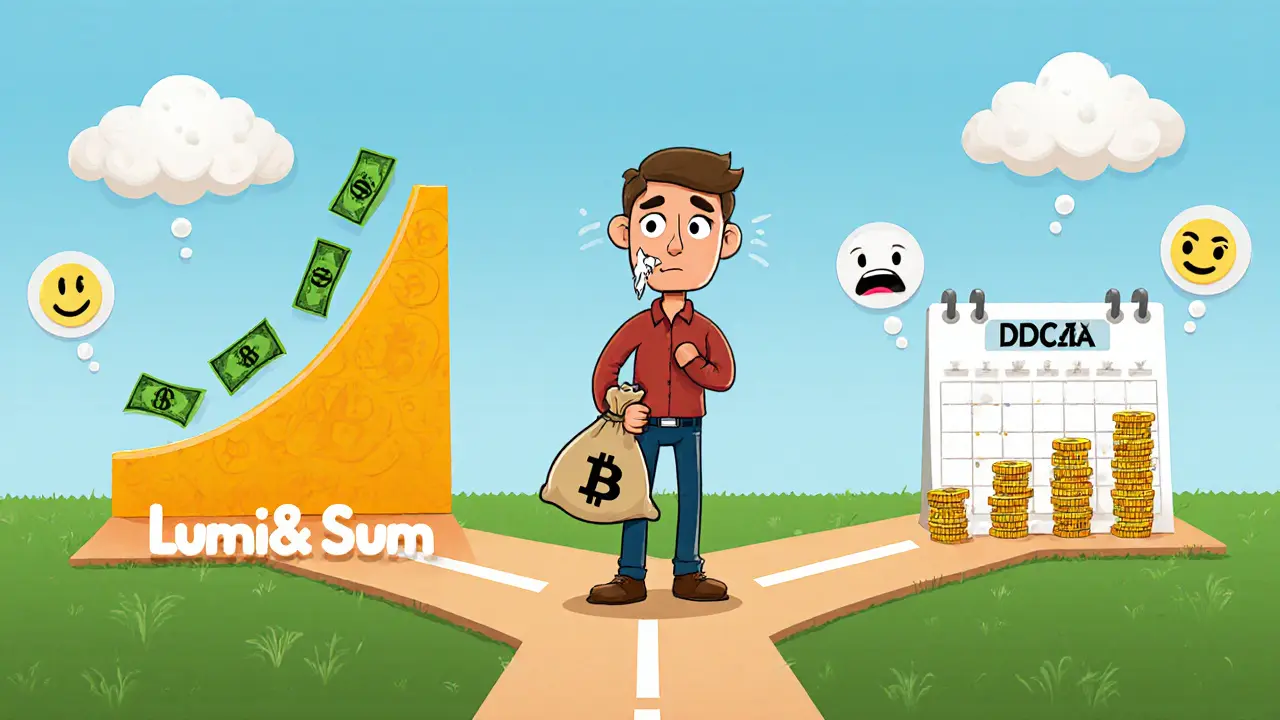Lump Sum Crypto: What It Means and How to Use It Wisely
When you buy lump sum crypto, a single, large purchase of cryptocurrency made all at once instead of in smaller installments. Also known as one-time crypto investment, it’s the opposite of dollar-cost averaging—where you spread buys over time. This approach isn’t for everyone, but for some, it’s the fastest way to build crypto wealth.
People who use lump sum crypto aren’t gambling. They’re betting on timing, conviction, and market cycles. Think of someone who bought Bitcoin in 2020 when it was under $10,000 and held through 2021’s rally. They didn’t wait for dips—they saw opportunity and moved. That’s the mindset. But it’s not just about buying low. It’s about understanding risk tolerance, having a clear exit plan, and knowing when the market is overheated. Many of the posts here cover exactly that: exchanges like Blockfinex and NovaEx where big trades happen, or assets like BAon and KALA that move fast and demand quick decisions. If you’re holding a large amount of cash and wondering whether to go all in, you’re not alone.
What makes lump sum crypto work isn’t luck—it’s context. If you’re buying during a major market correction, after a regulatory shift, or right after a protocol upgrade, timing matters. Look at Angola’s mining ban or Portugal’s tax rules—those aren’t just headlines. They’re signals. When governments act, prices react. And when the market shifts, lump sum buyers who move fast often outpace those waiting for the "perfect" entry. You’ll see this in posts about yield farming, DeFi tokens like SPHYNX, and even privacy coins like Monero. People who use lump sum strategies often end up in places where speed and confidence matter more than patience.
But here’s the truth: lump sum crypto isn’t better than drip-feeding your buys. It’s just different. One works if you’re confident. The other works if you’re cautious. Most people don’t know which they are until they’ve lost money. That’s why the posts here focus on real risks—not hype. Whether it’s avoiding fake airdrops like CHIHUA, understanding why Levana Protocol collapsed, or learning how active addresses reveal real adoption, these articles help you decide when to act—and when to wait. You’ll find no fluff here. Just facts about what’s working, what’s dying, and what’s still worth betting on.
DCA vs Lump Sum Investment in Crypto: Which Strategy Wins in 2025?
DCA vs lump sum in crypto: which strategy wins? Math says lump sum outperforms, but psychology says DCA keeps you in the game. Here's what actually works in 2025.
